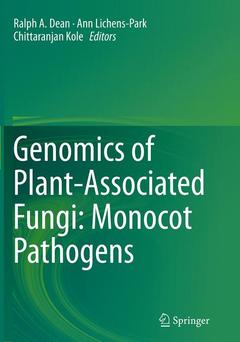Description
Genomics of Plant-Associated Fungi: Monocot Pathogens, Softcover reprint of the original 1st ed. 2014
Monocot Pathogens
Coordinators: Dean Ralph A., Lichens-Park Ann, Kole Chittaranjan
Language: English
Subject for Genomics of Plant-Associated Fungi: Monocot Pathogens:
Publication date: 08-2016
Support: Print on demand
Publication date: 09-2014
201 p. · 17.8x25.4 cm · Hardback
Description
/li>Contents
/li>Comment
/li>
This book describes how genomics has revolutionized our understanding of agriculturally important plant-associated fungi. It illustrates some fundamental discoveries about these eukaryotic microbes with regard to the overall structure of their genomes, their lifestyles and the molecular mechanisms that form the basis of their interactions with plants. Genomics has provided new insights into fungal lifestyles and led to practical advances in plant breeding and crop protection, such as predictions about the spread and evolution of new pathogens.
This volume focuses on fungi that are important cereal and other monocot plant pathogens and includes: Pyrenophora tritici-repentis, Cochliobolus sp., Colletotrichum sp., Fusarium graminearum, Mycosphaerellagraminicola and Mycosphaerella fijiensis, Magnaporthe oryzae, Blumeria graminis and Puccinia graminis.
First summary describing the genomes of several distinct groups of agriculturally significant fungi, with the tremendous progress made over the last decade
Describes both theoretical and practical aspects of fighting against crop loss
Of particular interest for scientists in industry, academia and government
Includes supplementary material: sn.pub/extras




